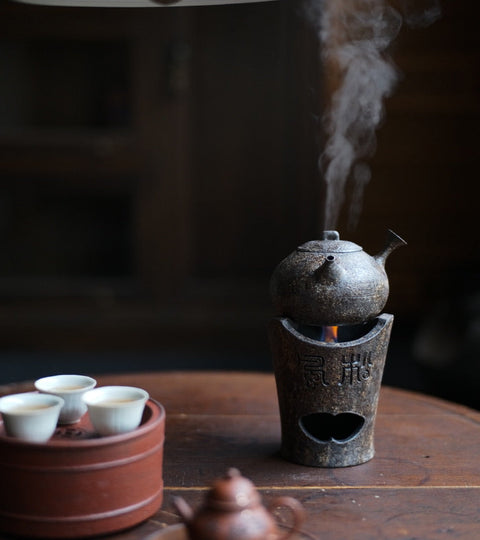风炉 ("Fenglu") is the traditional term for stoves or braziers that are used to boil water for a tea ceremony.
The history of the fenglu brazier traces back to ancient China, evolving in design and purpose with the passage of time and cultural shifts. Initially, braziers appeared as cooking tools for heating and preparing food. However, as tea culture developed, people began to use them specifically for heating water for brewing tea.
- Eastern Han Dynasty: Records of using braziers to heat water date back to the Eastern Han period.
- Tang and Song Dynasties: By the Tang and Song dynasties, with the rise of tea art, braziers were dedicatedly used in tea ceremonies, featuring more exquisite designs and becoming a significant element in tea culture.
- Ming and Qing Dynasties: During the Ming and Qing dynasties, tea art reached its zenith, and the design and use of braziers became even more diverse and refined. In this era, the art of tea and the use of braziers became significant symbols of Chinese culture.
Fenglu are more than just practical tools; they also reflect the aesthetic tastes and lifestyles of ancient Chinese society. Braziers from different dynasties vary in material, shape, and decoration, often regarded as artworks to be collected and appreciated. The evolution of the brazier is closely linked with Chinese tea culture, mirroring the shift from simple consumption to a deeper appreciation for aesthetics and social interaction. 😊🍵
For me, a fenglu is a core part of the tea experience and can be an elegant piece of art for your home as well - which is why I've curated a large collection of fenglu at 180andup. Our different artists each bring their own styles and interpretations to their fenglu while ensuring that they are all practical and useful stoves as well.
When you want to add a fenglu to your tea collection, check out our collection of fenglu stoves!

